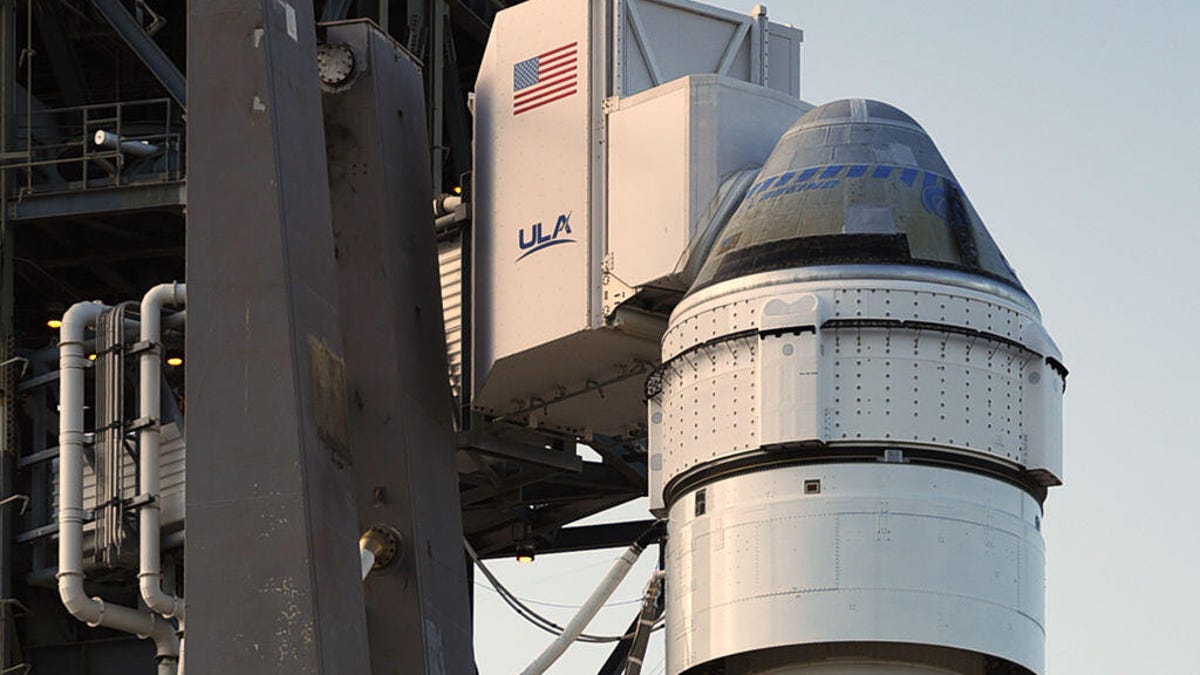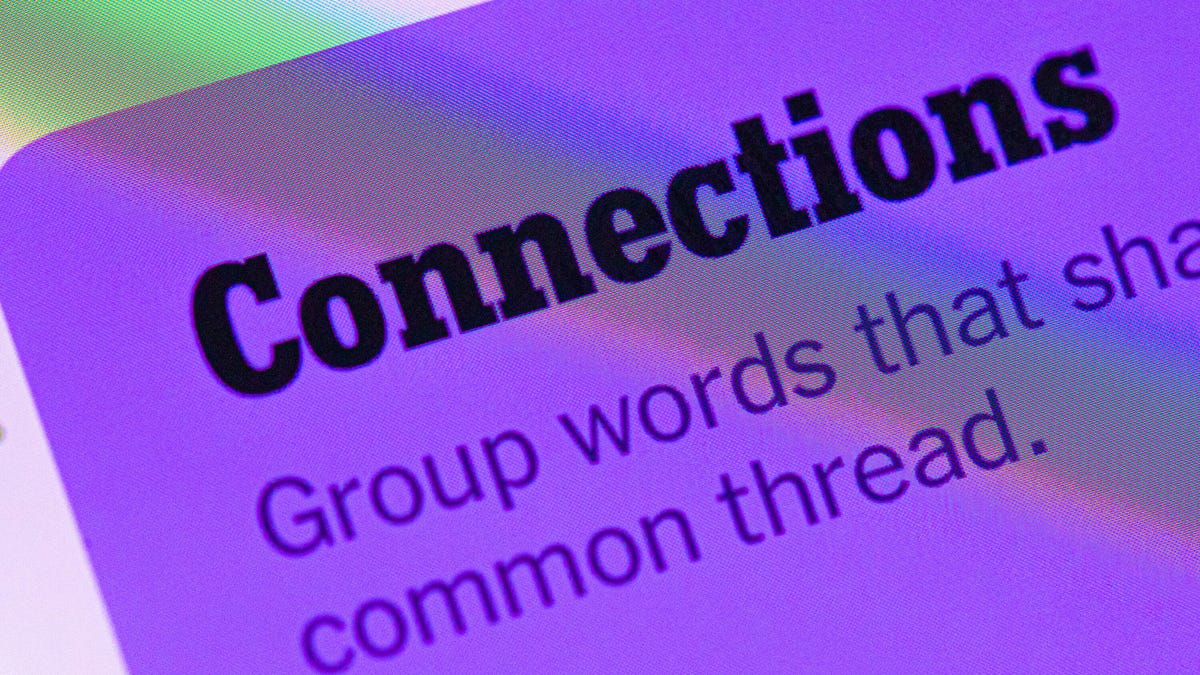Technologies
The Boeing Starliner Launch Is Delayed: Here’s What to Know
The Starliner’s first crewed launch has been more than a decade in the making.

Not so fast, Boeing Starliner. Boeing’s first crewed spaceflight was scheduled to launch Monday night from Space Launch Complex 41 at Florida’s Cape Canaveral Space Force Station, but it was postponed just two hours before liftoff. Astronauts Suni Williams and Butch Wilmore were on board and ready to fly when the launch was called off. On Tuesday, NASA said that the earliest the launch would happen would be Friday, May 10.
The mission was scrubbed because of a faulty oxygen relief valve on the Atlas V rocket that was set to send the Starliner capsule into space. The valve was «buzzing,» or opening and closing rapidly, during the launch countdown, Space.com reported.
The Atlas V rocket was created by the United Launch Alliance, which is a joint venture between Boeing and Lockheed Martin.
NASA says the mission will take the astronauts to the International Space Station for a little over a week, to test the Starliner spacecraft and its subsystems. The testing is the final step in certifying the Starliner for repeat use in transport missions to and from the ISS. Once it finally launches, the Starliner should reach the ISS approximately 26 hours after launch.
This is the first new spacecraft to head to the ISS since the SpaceX Demo-2 made the same voyage back in 2020. The Boeing Starliner started life in 2010, when it was selected by NASA to be the next reusable transport to the ISS.
«The arrival of a brand-new vehicle, the first crewed flight of a new-generation spacecraft, is a really big deal,» said Michael Barratt, one of seven residents of the ISS. «You leave nothing to chance.»
A mission 14 years in the making
The Starliner was initially conceived as a commercial effort to take more people into space. In 2014, NASA tapped Boeing and SpaceX, and chose Starliner to be one of the first privately constructed spacecraft to shuttle astronauts to the ISS. NASA wanted to lean more on private business to build and maintain such spacecraft, instead of performing all the work itself.
Test flights were delayed for several reasons, ranging from unfavorable weather conditions to problems with software. Tests were pushed back in 2019 and again in 2021, and eventually were delayed till 2022.
The unmanned test flight finally launched on May 19 of that year, with the mission wrapping up a week later. It was a huge win for the Boeing crew, since it opened the doors for a crewed mission to the space station. NASA was pretty pumped about it as well. But the crewed launch was pushed back because of various problems, including some with the Atlas V rocket that’s presenting the problem with the 2024 launch.
The spacecraft is part of NASA’s Commercial Crew Program, which is connected to its Artemis and moon to Mars plans.
How to watch the Boeing Starliner launch — eventually
NASA had planned to livestream Monday’s event on its YouTube channel, with commentary by Spaceflight Now’s Will Robinson-Smit. The direct video link is here, but of course the livestream is on hold until it happens.
Other YouTube channels had also planned to livestream the event, including SpaceX, Space.com’s VideoFromSpace channel and the Associated Press YouTube channel. We’ll update this story, and the video links, when a new launch date and time are announced.
CNET’s Gael Cooper contributed to this article.
Technologies
Today’s NYT Strands Hints, Answers and Help for Nov. 28 #635
Here are hints and answers for the NYT Strands puzzle for Nov. 28, No. 635.

Looking for the most recent Strands answer? Click here for our daily Strands hints, as well as our daily answers and hints for The New York Times Mini Crossword, Wordle, Connections and Connections: Sports Edition puzzles.
Today’s NYT Strands puzzle is pretty tricky. If you’re not familiar with certain superstitious beliefs, you might not find all the answers. And some of the answers are difficult to unscramble, so if you need hints and answers, read on.
I go into depth about the rules for Strands in this story.
If you’re looking for today’s Wordle, Connections and Mini Crossword answers, you can visit CNET’s NYT puzzle hints page.
Read more: NYT Connections Turns 1: These Are the 5 Toughest Puzzles So Far
Hint for today’s Strands puzzle
Today’s Strands theme is: If all else fails…
If that doesn’t help you, here’s a clue: Don’t tell, it won’t come true.
Clue words to unlock in-game hints
Your goal is to find hidden words that fit the puzzle’s theme. If you’re stuck, find any words you can. Every time you find three words of four letters or more, Strands will reveal one of the theme words. These are the words I used to get those hints but any words of four or more letters that you find will work:
- GLUB, RATS, TARN, DALE, FONT, FOUNT, LASH
Answers for today’s Strands puzzle
These are the answers that tie into the theme. The goal of the puzzle is to find them all, including the spangram, a theme word that reaches from one side of the puzzle to the other. When you have all of them (I originally thought there were always eight but learned that the number can vary), every letter on the board will be used. Here are the nonspangram answers:
- DANDELION, STAR, COIN, FOUNTAIN, LADYBUG, EYELASH
Today’s Strands spangram
Today’s Strands spangram is MAKEAWISH. To find it, start with the M that’s three letters down on the far right, and wind backwards.
Technologies
Today’s NYT Connections Hints, Answers and Help for Nov. 28, #901
Here are some hints and the answers for the NYT Connections puzzle for Nov. 28, #901.

Looking for the most recent Connections answers? Click here for today’s Connections hints, as well as our daily answers and hints for The New York Times Mini Crossword, Wordle, Connections: Sports Edition and Strands puzzles.
Today’s NYT Connections puzzle is kind of tough. If you need help sorting the answers into groups, you’re in the right place. Read on for clues and today’s Connections answers.
The Times now has a Connections Bot, like the one for Wordle. Go there after you play to receive a numeric score and to have the program analyze your answers. Players who are registered with the Times Games section can now nerd out by following their progress, including the number of puzzles completed, win rate, number of times they nabbed a perfect score and their win streak.
Read more: Hints, Tips and Strategies to Help You Win at NYT Connections Every Time
Hints for today’s Connections groups
Here are four hints for the groupings in today’s Connections puzzle, ranked from the easiest yellow group to the tough (and sometimes bizarre) purple group.
Yellow group hint: Appropriate.
Green group hint: I win!
Blue group hint: Musical instrument.
Purple group hint: Time to talk.
Answers for today’s Connections groups
Yellow group: Fitting.
Green group: Achieve victory over.
Blue group: Parts of an electric guitar.
Purple group: Phonetic elements of speech.
Read more: Wordle Cheat Sheet: Here Are the Most Popular Letters Used in English Words
What are today’s Connections answers?
The yellow words in today’s Connections
The theme is fitting. The four answers are fair, just, proper and right.
The green words in today’s Connections
The theme is achieve victory over. The four answers are beat, best, take and worst.
The blue words in today’s Connections
The theme is parts of an electric guitar. The four answers are fret, peg, pickup and string.
The purple words in today’s Connections
The theme is phonetic elements of speech. The four answers are intonation, loudness, rhythm and stress.
Technologies
Anker’s New MagSafe Car Mount Keeps Your Phone Cool While Charging, and It’s 30% Off for Black Friday
Get wired-like charging speeds and MagSafe compatibility with Anker’s wireless car charging bundle for $62.99.
Black Friday is the best time of the year to upgrade the little essentials that make your everyday tech life more pleasant. I’ve found the perfect deal to amp up the phone charging setup in your car. This Anker MagSafe wireless car charging bundle is 30% off for the holidays, and it gives your iPhone a fast and steady way to power up while you navigate. It delivers up to 25-watt wireless charging speeds and with onboard active cooling, your phone stays comfortable to the touch.
Get it now for $62.99 verses the list price of $89.99.
What sets this charger apart is that its performance and cooling tech is built into a surprisingly compact package. The stand uses an ultra-strong Qi2 magnetic lock to keep your phone secure through bumps and turns. You can even tilt the mount and switch between portrait and landscape modes for navigation without blocking the view. The bundle has everything you need to get started including a 60-watt dual-USB-C charger, an adequately long USB-C cable, and cable organizers for a clean setup. Anker also includes a two-year warranty for peace of mind.
If you are getting your car prepped up for driving to a holiday vacation or just need a faster charging mount for your daily commute, this deal makes a lot of sense. CNET’s experts are also tracking more Black Friday and Cyber Monday picks across Apple products, headphones, and more, so you can score more savings before the sales season wraps up.
MOBILE DEALS OF THE WEEK
-
$749 (save $250)
-
$475 (save $175)
-
$499 (save $300)
-
$900 (save $400)
Why this deal matters
A high quality charger is a great addition to any car to speedily top up your phone on the go. You will especially want to look out for options from a top-tier brand like Anker for its fast charging speeds and reliability. This Black Friday deal is an excellent opportunity to save big on a staple car accessory. With holiday shopping heating up and tech accessories being one of the most popular categories, we expect the deal to sell out quick. So don’t wait too long before jumping on it.
Don’t miss any of our unbiased tech content and lab-based reviews. Add CNET as a preferred Google source.
Join Our Daily Deals Text Group!
Get hand-picked deals from CNET shopping experts straight to your phone.
By signing up, you confirm you are 16+ and agree to receive recurring marketing messages at the phone number provided. Consent is not a condition of purchase. Reply STOP to unsubscribe. Msg & data rates may apply. View our Privacy Policy and Terms of Use.
-

 Technologies3 года ago
Technologies3 года agoTech Companies Need to Be Held Accountable for Security, Experts Say
-

 Technologies3 года ago
Technologies3 года agoBest Handheld Game Console in 2023
-

 Technologies3 года ago
Technologies3 года agoTighten Up Your VR Game With the Best Head Straps for Quest 2
-

 Technologies4 года ago
Technologies4 года agoBlack Friday 2021: The best deals on TVs, headphones, kitchenware, and more
-

 Technologies4 года ago
Technologies4 года agoVerum, Wickr and Threema: next generation secured messengers
-

 Technologies4 года ago
Technologies4 года agoGoogle to require vaccinations as Silicon Valley rethinks return-to-office policies
-

 Technologies4 года ago
Technologies4 года agoOlivia Harlan Dekker for Verum Messenger
-

 Technologies4 года ago
Technologies4 года agoiPhone 13 event: How to watch Apple’s big announcement tomorrow
